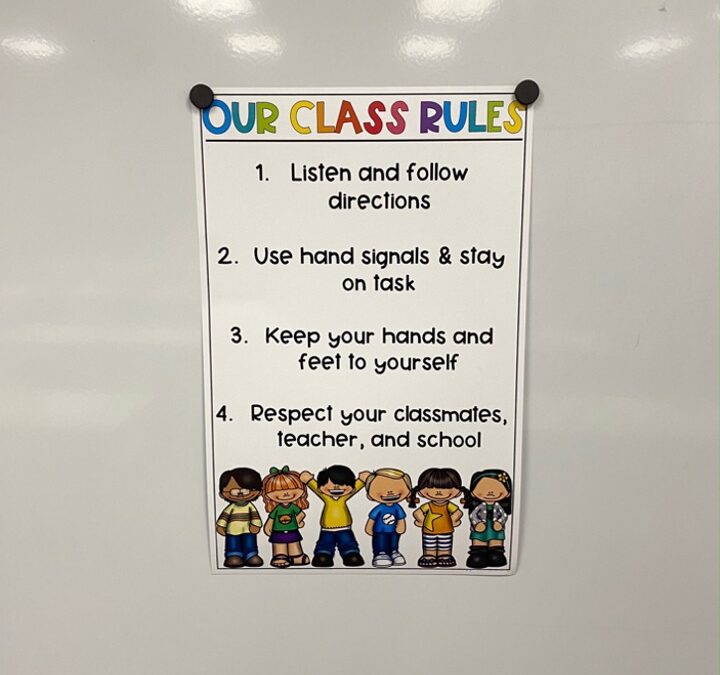As a teacher, one of the most important aspects of your job is to create a positive and organized learning environment for your students. Teachers set up and run the classroom. And doing this effectively means that you are probably using different classroom management strategies. These help you manage your classroom in a way that maximizes student engagement, learning, and success.
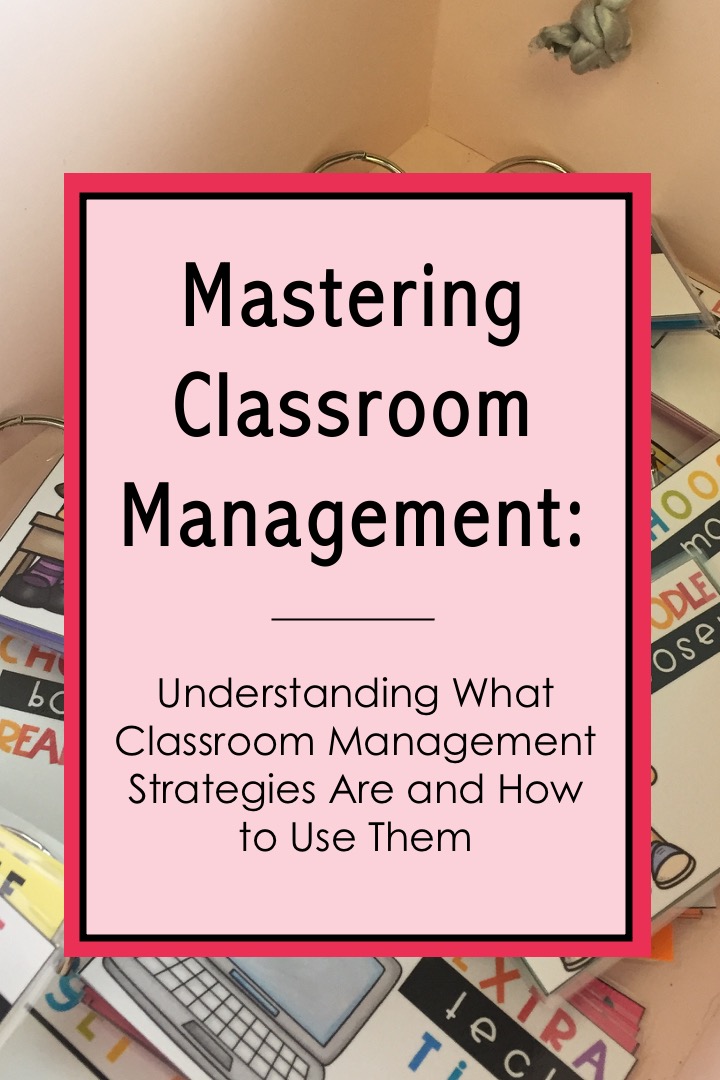
In this blog post, we will discuss what are classroom management strategies and then different classroom management strategies and techniques I use in my classroom. Pick some of these strategies to use in your classroom and see how you can enhance the culture and learning with your students.
What Are Classroom Management Strategies
Classroom management strategies are techniques and methods that teachers use to establish and maintain a positive learning environment in their classrooms. Effective classroom management involves creating a safe and supportive environment, setting clear expectations for student behavior, managing classroom routines and procedures, and promoting student engagement and learning. By implementing classroom management strategies, teachers can help students feel comfortable, motivated, and supported, which can lead to improved academic performance and student success.
Classroom Management Strategies and Techniques
There are many different classroom management strategies and techniques that teachers can use to enhance their teaching. These include establishing clear expectations, building positive relationships, using positive reinforcement, being consistent and fair, and engaging students. Let’s look at why these specific classroom management strategies and techniques are important plus examples of how I implement them in my 2nd grade classroom.
Establishing clear expectations: One of the most important aspects of effective classroom management is establishing clear expectations for student behavior and academic performance. As teachers we need to set guidelines for appropriate behavior, establish consequences for misbehavior, and outline academic expectations and goals.
To do this in my classroom, I create a class agreement with my students. During the first week of school, I read to my students different picture books to teach different morals and values. We keep a list of the lessons we learn from each book. Then from that, we make a list of rules for our class. I type up the rules on a nice poster and print it off. Then each student writes their name on the poster. I tell my students that by writing their name, they are agreeing to follow those rules. Then each morning, we recite our rules as a class. I even have my students help make up hand signals to go with each rule. The more you get students involved in this, the more they buy into the rules and want to follow them. To learn more about this, check out this blog post here: How to Make a Classroom Agreement for Elementary
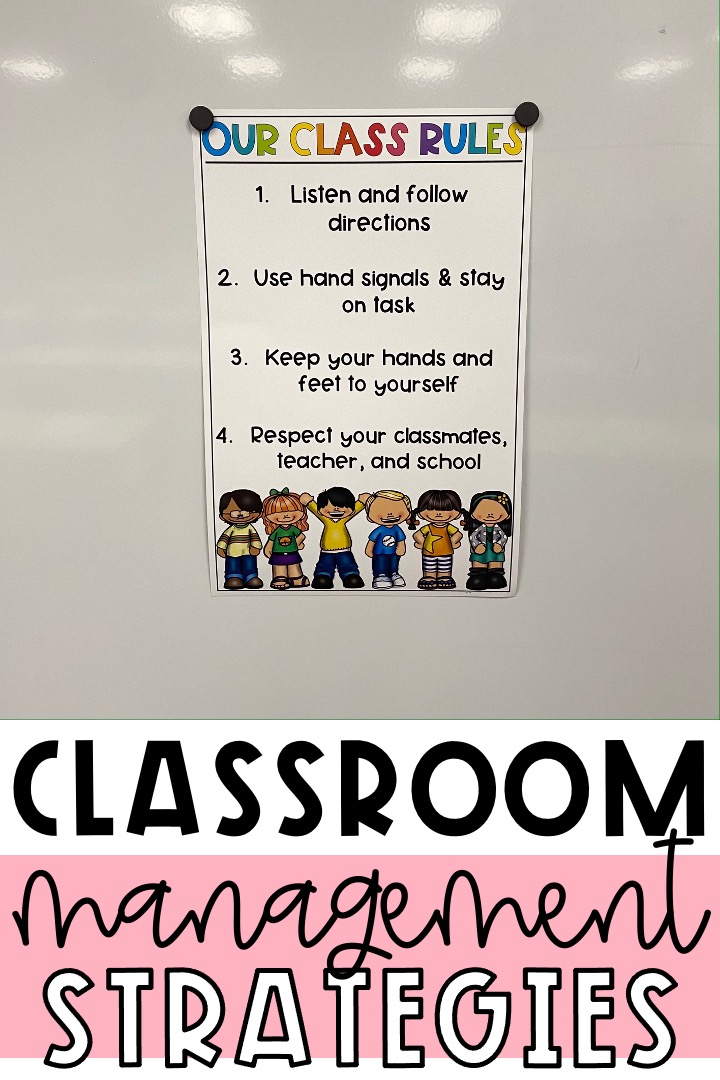
Find the template I use for my class agreement here.
I teach students what I expect in regards to classroom procedures and routines. These are what I expect students to do when they are lining up, getting a pencil, or moving to our carpet area. To establish clear expectations, I display a PowerPoint.
At the beginning of the school year, we read through the steps of each procedure. I model it to students. We take note of what that procedure should look like, sound like, and feel like. Then students practice it.
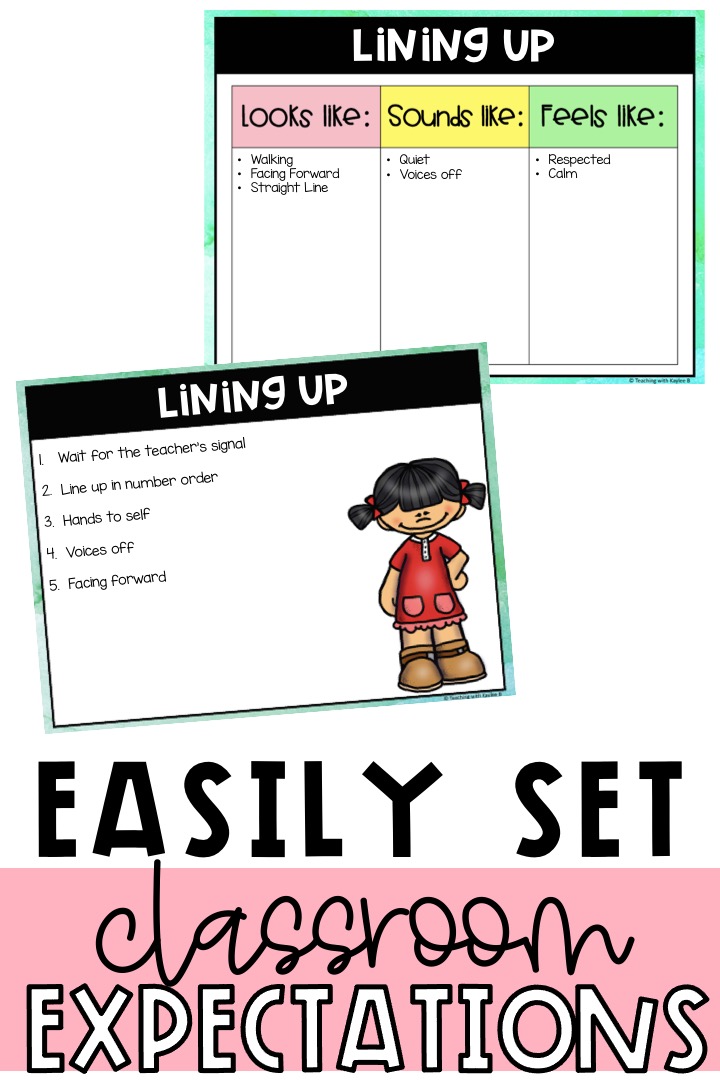
Learn more about this, plus get a list of important classroom routines and procedures in this blog post here.
Get the PowerPoint I use with my students here.
See how I introduce these during the first week of school. I have my first week of school plans typed up in a google doc to share with you for free! That way you can tweak things to your needs and save time this back to school season. Get your copy here. It also comes with my Back to School Checklist!
Building positive relationships: Teachers can build positive relationships with their students by creating a welcoming and supportive environment, getting to know their students on a personal level, and showing empathy and understanding.
Here’s a few ways I do this with my second grade students.
First, I make sure my students feel welcome in our class. To help do this, I make a fun beginning of the year classroom door display. It has a donut theme of “Donut worry, 2nd grade is sweet!” I display clipart of donuts with each students’ name on them.
On Back to School Night, as my new students are coming into my classroom for the first time, they look for their name on our classroom door and it helps them feel like they are a special part of our class by seeing their name. It also helps them know they are in the right place, which gives them comfort.
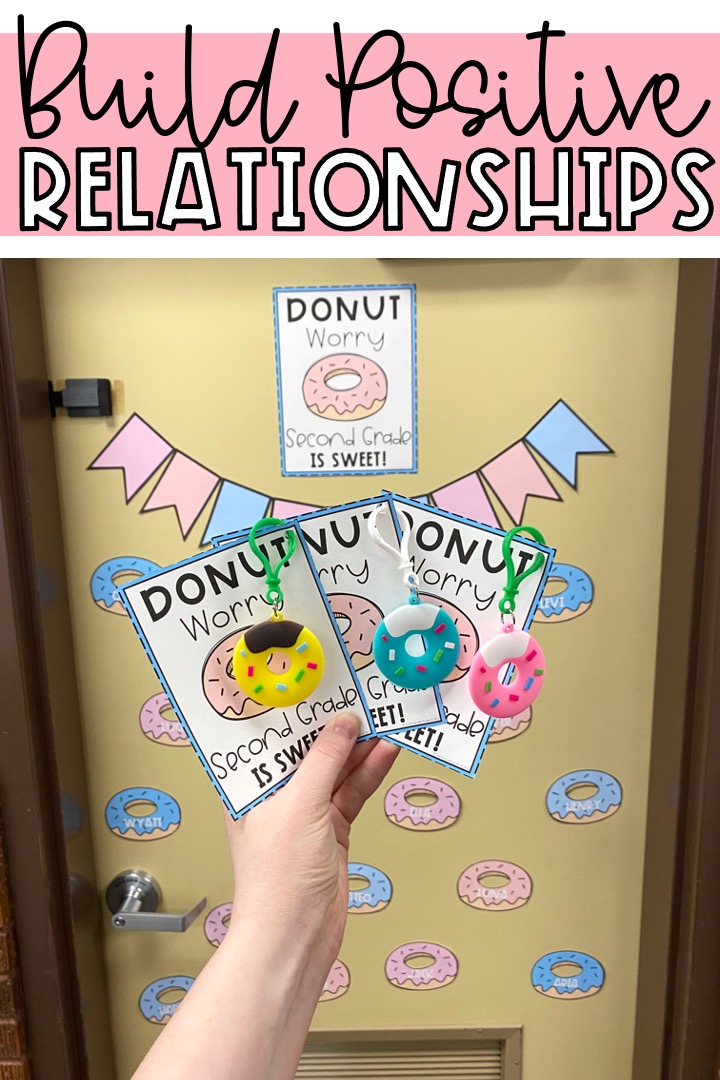
In addition to this, I give my students a little gift that goes along with this theme. I give them a little donut keychain they can put on their backpack. I attach it to a paper that says, “Donut Worry, Second Grade is Sweet.” I leave these on my students’ desks for Back to School Night. This way they go home with a little gift from me. Find these keychains here. Find the sign to go with them here.
Learn more about this door display and student gifts in this blog post here: Beginning of the Year Classroom Door Ideas That Are So Cute
I also get to know my students’ interests. On the first day of school, I have a bag filled with things I like. I include a cat stuffed animal, a running shoe, my favorite Switch game, and my favorite candy bar. This helps students get to know me and some of my interests. Then I give them a worksheet that has a picture of a bag on it. They draw in some of their likes and interests. There are lines on the bottom, so they can list those things they draw. Then I take note of what each student draws. I try to bring these things up in future conversations and in lessons.
Another way I build positive relationships with students is to greet students at my door in the morning with a smile. I want students to know that they have a teacher that wants a positive start to the day. So I greet each student with a “good morning.” At the end of the day, I walk my students out to the doors where they exit the school and I wish them a good rest of the day. These are just a couple simple things that I think make a big difference.
Using positive reinforcement: Teachers can use positive reinforcement to encourage good behavior and academic performance. This can involve providing verbal praise, rewards such as creative stickers, extra free time, or other incentives.
If you want more positive behavior, you need to point it out. I will often say things like this to my students: “Thank you to those who followed instructions and got out their books quietly.” or “I see Jimmy and a few other students get started on their work right away. Thank you!” Other students see these things and then follow instructions as well.
I also use a Whole Class Rewards System in my 2nd grade classroom. It is our class flower. Students vote and choose a reward they want to work towards. For example, they may vote for a popcorn corn party. The goal goes in the middle of the flower. Then students work together to earn the petals of the flowers. When they get all ten petals, they earn the reward. This is super motivating for students! Learn more about this system here in this blog post: The Best Whole Class Rewards System Ever!
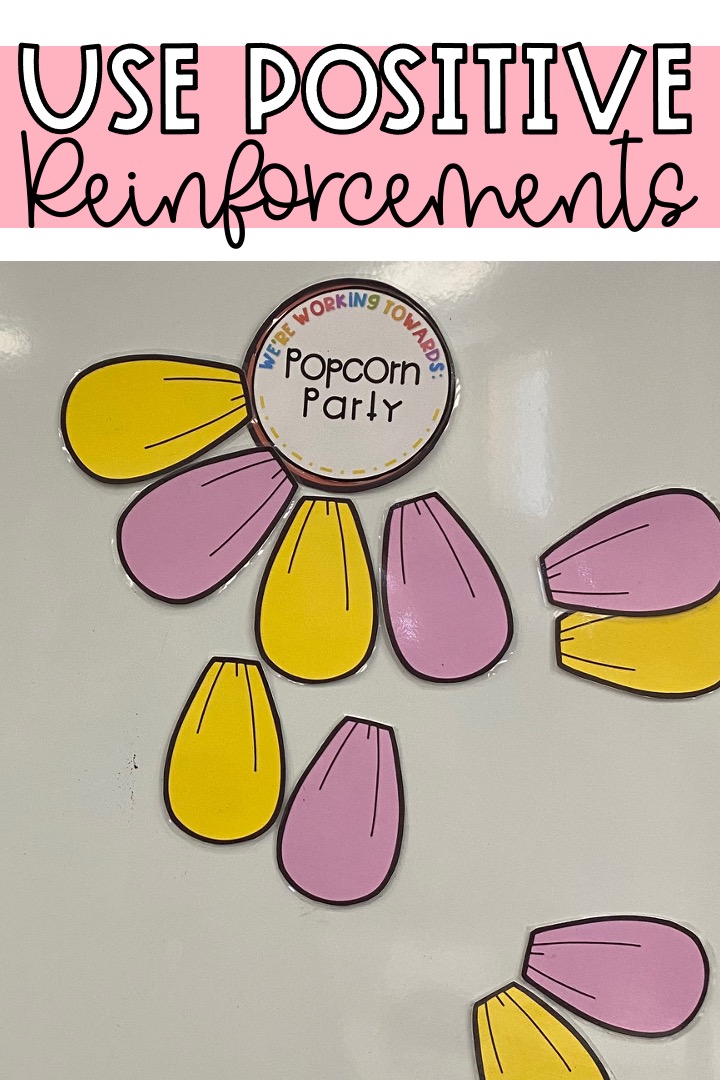
Find this Whole Class Rewards System to use in your classroom here.
Another way I help give positive reinforcement is with Fun Friday time. I have a designated 15 minutes at the end of each Friday where students can play with our classroom toys and games. Students can go do Fun Friday right away if they have completed all their work from the week and if the inside of their desk is clean and organized. This helps motivate students to work hard throughout the week.
I also let students earn more Fun Friday time throughout the week. If I see students are quick with transitions, I will add some Fun Friday seconds on our front white board. If I see all students on task and working hard I will add Fun Friday seconds on our front white board. When it comes to our Fun Friday time, I will add those seconds to our 15 minutes. Learn more about how to use Fun Friday in your classroom in this blog post here: 3 Fun Friday Ideas for Classroom Management
I also like to reinforce positive behavior for individual students. I do this with a Good Choice Punch Card. Whenever I see a student go above and beyond with good behavior, I will give them a punch on their punch card. After students get 10 punches, they get to choose a Student Reward Coupon. These are fun little rewards like sitting in the teacher’s chair of the day or getting to bring a stuffed animal to school.
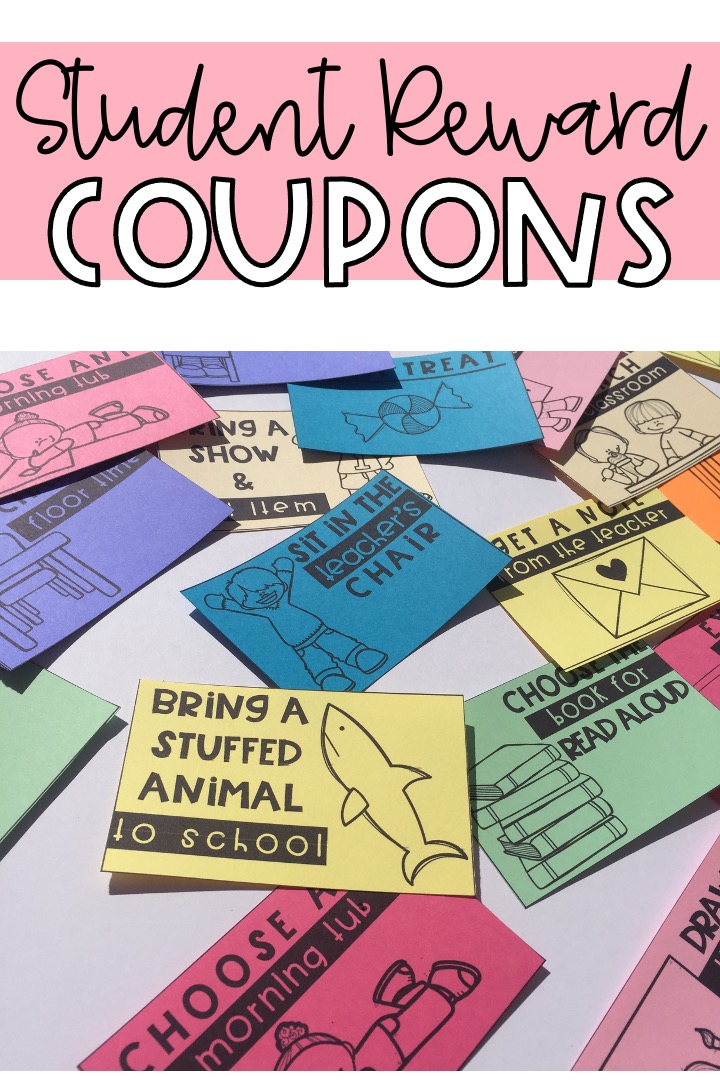
I keep these coupons in a treasure box to make it even more fun for students. Learn more about these individual student rewards here in this blog post: 15 Student Reward Coupons That Will Excite Students Find these coupons to use in your classroom here.
See how I introduce these rewards during the first week of school. I have my first week of school plans typed up in a google doc to share with you for free! That way you can tweak things to your needs and save time this back to school season. Get your copy here. It also comes with my Back to School Checklist!
Consistency and fairness: Teachers should be consistent in their approach to classroom management, treating all students fairly and applying consequences consistently.
I think being consistent is one of the hardest parts of being a teacher. If you have set rules and expectations, you have to be consistent everyday with reinforcing those or else they won’t mean anything to students. Here are some things that have helped me be consistent with my students.
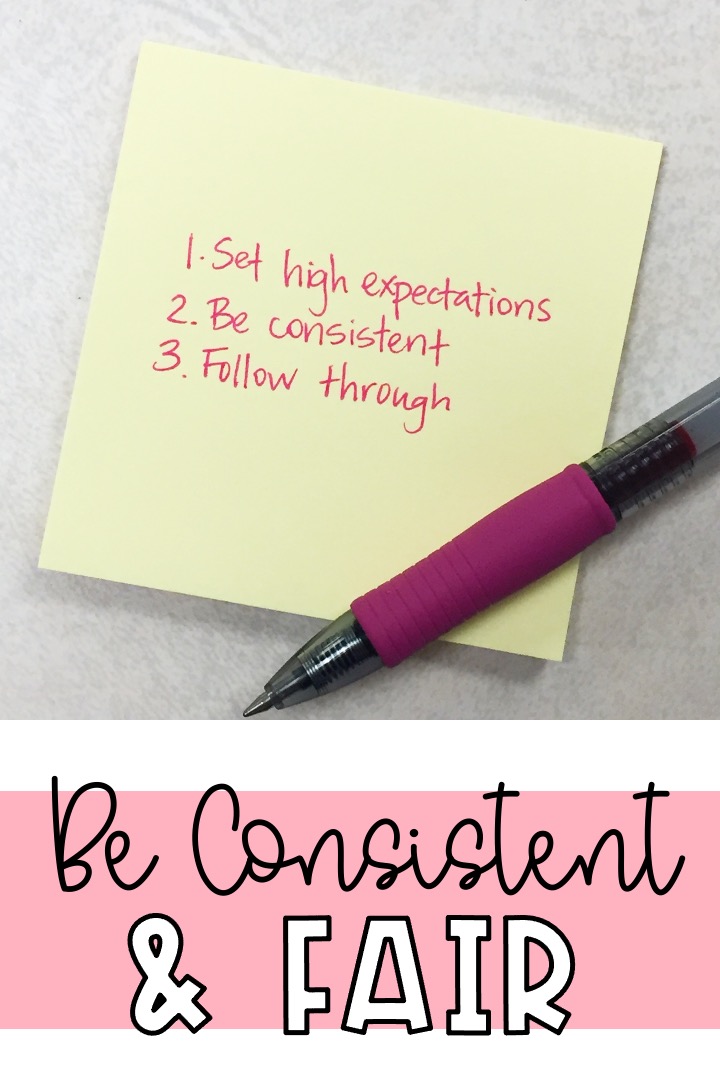
If students don’t do something and don’t follow the expectations that come with procedures and routines, I have them try again. Here’s an example. If I taught students that they should line up for recess quietly and then they are rowdy while lining up, I will have everyone sit down and try again. They try again until it meets my expectations. If you do this really well at the beginning of the school year then students will know what you expect every time and they will be more likely to follow your expectations every time.
Another way to help me with consistency is to have set classroom consequences for when individual students break a rule. When a student breaks a rule the first time in a day, I will give them a verbal warning. I teach my students that this is a signal to tell their brain to stop what they are doing and to make a better choice. If that student breaks another rule that day, I move them to an empty desk I have by my teacher’s desk. They spend the rest of that lesson there. The third time they break a rule, they fill out a worksheet where they write what they did wrong and what they should have done instead. Then the fourth time, they get a parent note sent home.
Out of fairness, I have to follow through with classroom consequences with every student. I can’t let things slide for certain students. Even if it is my sweetest and best behaved student, I have to address the behavior with a classroom consequence.
Another aspect that goes along with fairness is that I always give students a clean slate at the beginning of the next day.
Engaging students: Engaging students in the learning process is essential to effective classroom management. Teachers can use a variety of techniques to engage students, including using multimedia resources, providing opportunities for collaboration and discussion, and creating interactive lessons.
I have found that when my students are engaged in our lessons, there are less behavior problems. When students are bored, then they will start acting out as a way to entertain themselves.
Here are some easy ways I promote student engagement in my 2nd grade classroom.
First, I have students “turn and talk.” Each student has a set “turn and talk” partner they are sitting by. I ask an open ended question, then I have students think about the answer in their head for 30 seconds, then I have students turn and talk to their partner. After a minute or so I will count down so that students finish their conversation and have their attention turned back to me. Then I will call on a few students to share what they talked with their partner about. This is much more effective than just asking a question and calling on a couple students. When you do that only 2 students are engaged, but if you use this “turn and talk” technique then all your students are engaged in the discussion.
When I want my students to be engaged with my lesson, I let them use whiteboards. For example, if we are learning the “or” and “ore” pattern in phonics, I will have my students make a chart and sort the words I tell them on the condition on if the word is spelled with “or” or “ore.” Every student is thinking about the word. And all students are writing words down, making this a great engagement strategy.
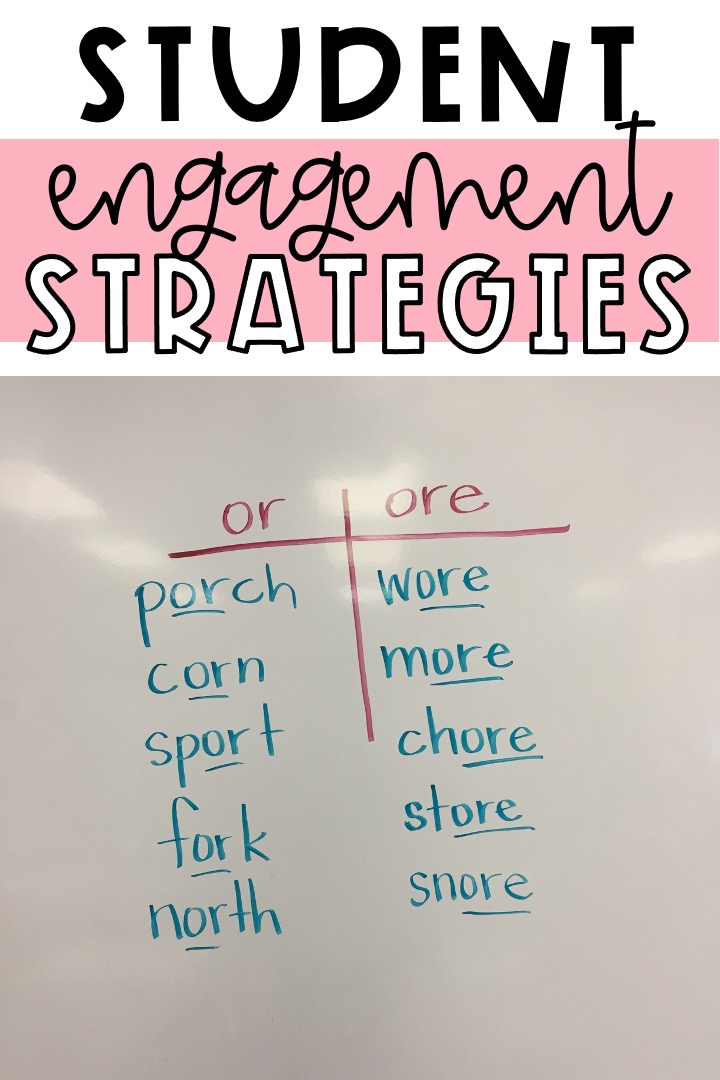
One of my favorite classroom activities that always engages students is what I call “Feed the Cat.” I have an organization bin that looks like a cat. I list a bunch of 2 digit addition equations on the board. Students solve the math problems on small slips of paper. If students needed to regroup, they “feed the cat” by putting that slip in the cat bin. If they didn’t, they put their paper in another bin I set out. Students work so hard to “feed the cat” they almost forget they are also practicing their math skills. This “Feed the Cat” activity works with any activity that has to deal with sorting. You could do words with closed syllables vs. open syllables. Or you could do nouns vs. verbs. It really can work with any subject!
I also love to engage my students with fun math games in my classroom. I use these as fast finisher activities. Learn more about these games and how I use them as fast finisher activities here in this blog post: 12 Fast Finisher Activities That Are So Fun
How can classroom management strategies and techniques be used to enhance your teaching? Let me know in the comments. I love to hear from my readers.
I hope you have been able to get a good sense of what are classroom management strategies. By implementing effective classroom management strategies and techniques, teachers can create a positive learning environment that maximizes student engagement, learning, and success. This involves not only delivering effective lessons but also managing the classroom in a way that promotes positive behavior, encourages student participation, and fosters a sense of community and respect. By setting clear expectations, building positive relationships, using positive reinforcement, maintaining consistency and fairness, and engaging students, teachers can create a classroom environment that supports student success and achievement.
Take the time to develop and implement effective classroom management strategies, and see the positive impact they can have on your teaching and your students’ learning.
Find all of my classroom management resources in a money saving bundle here.
Looking for everything you need for Back to School? Check out this bundle where you get all of my classroom management tools plus other back to school essential in this Back to School Mega Bundle here.
As an Amazon Associate I earn from qualifying purchases.

